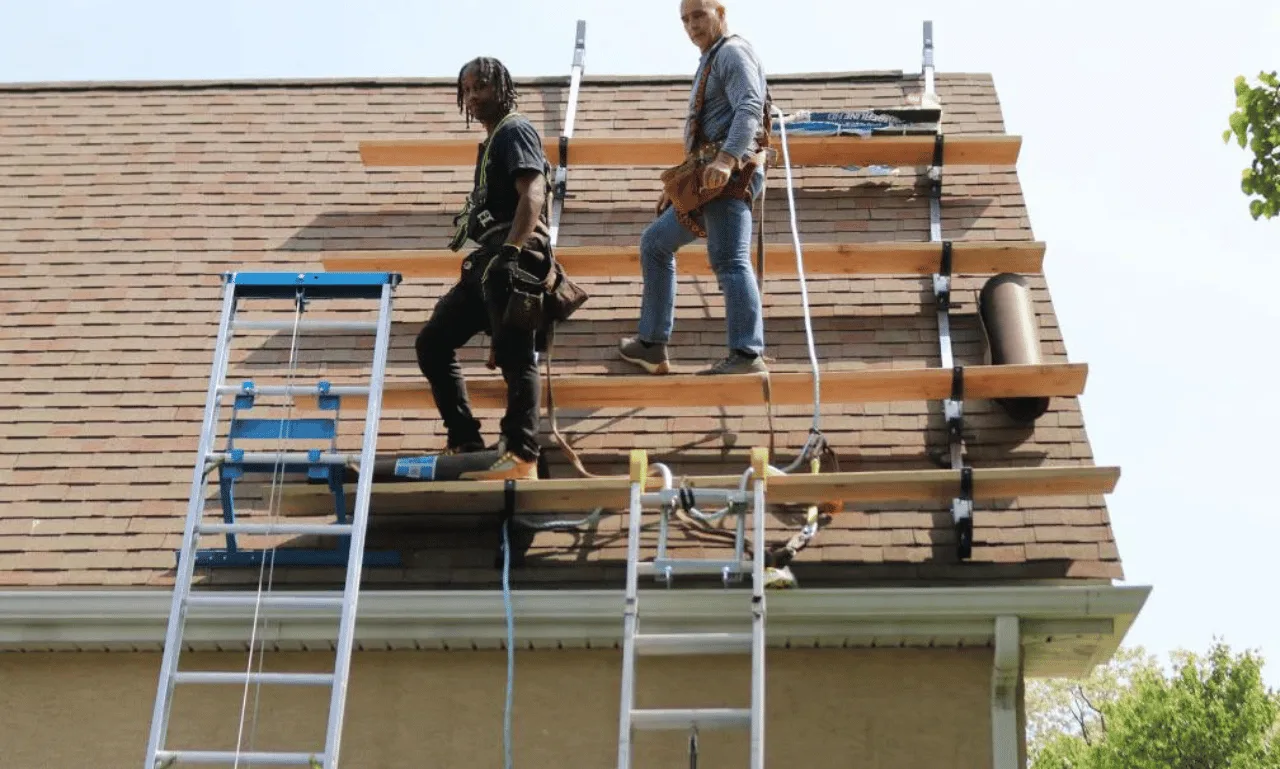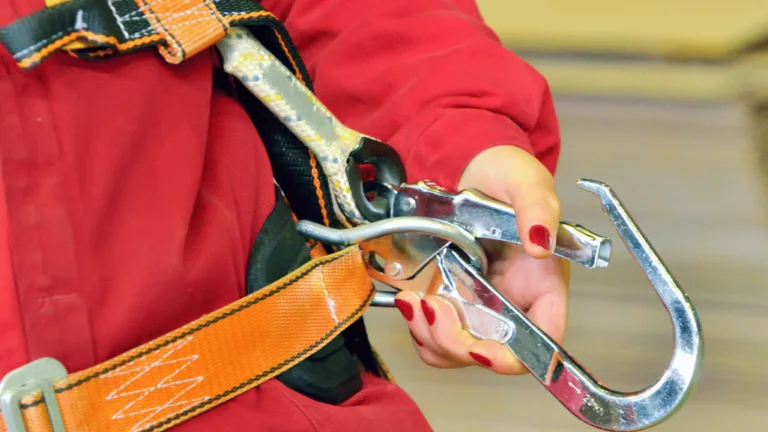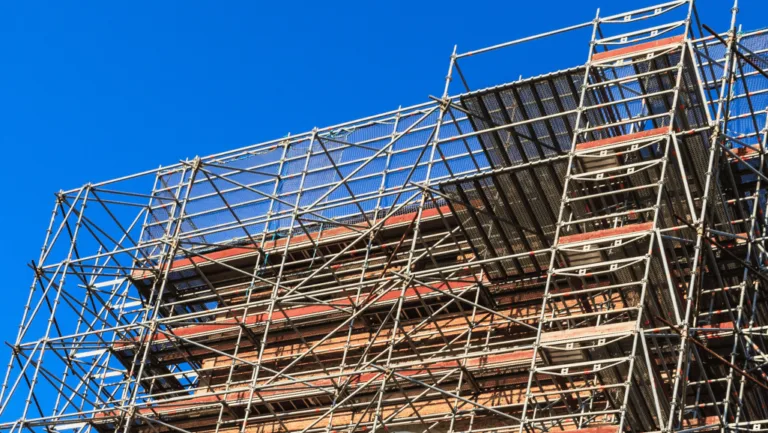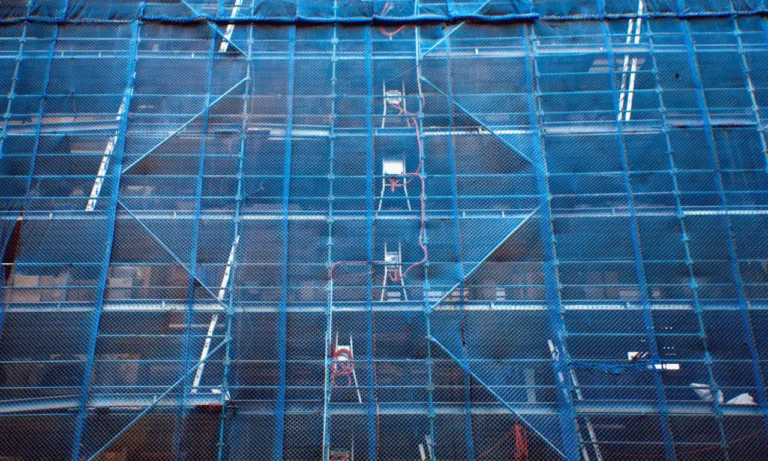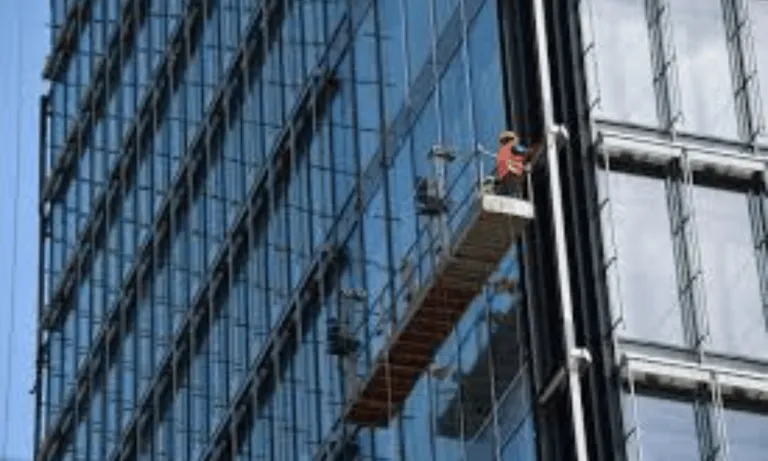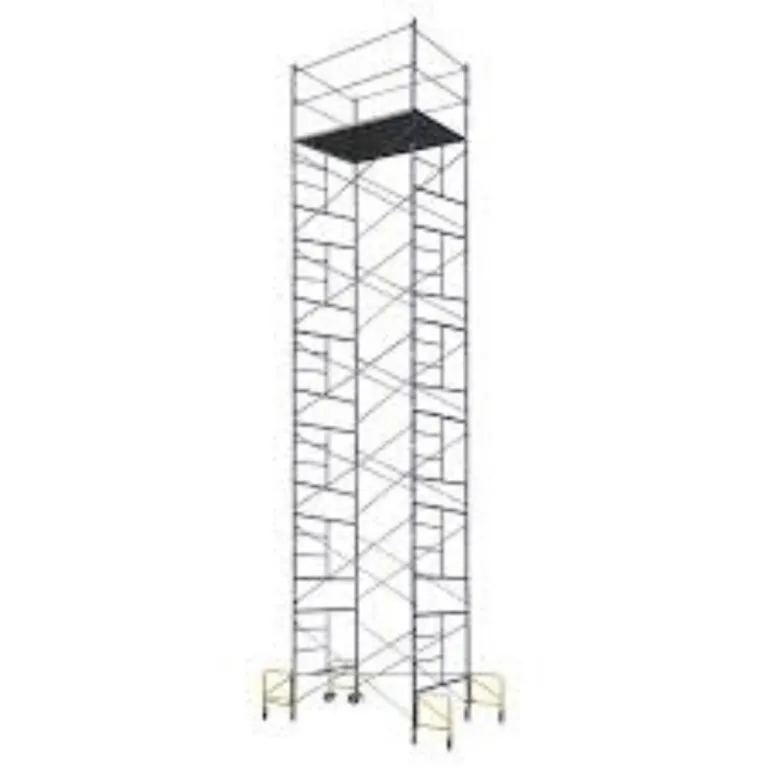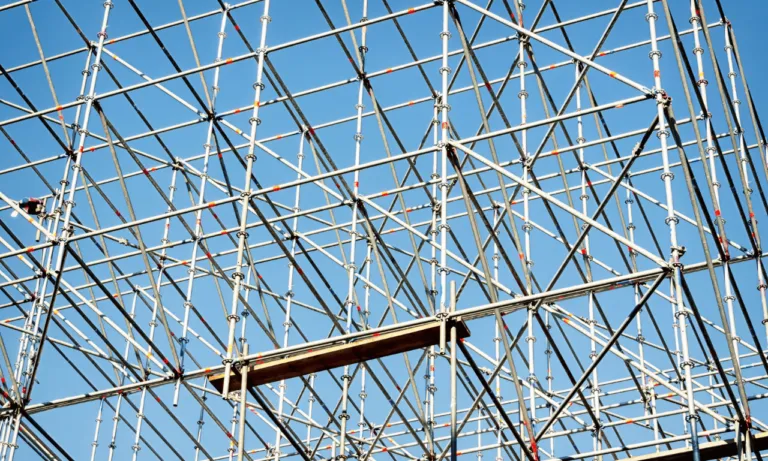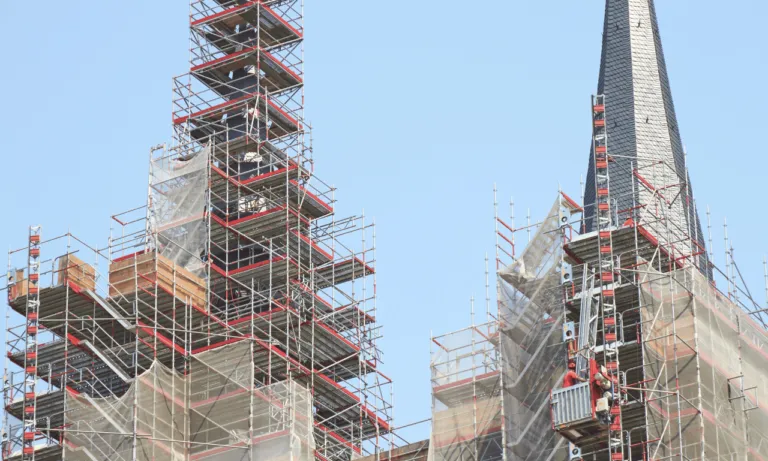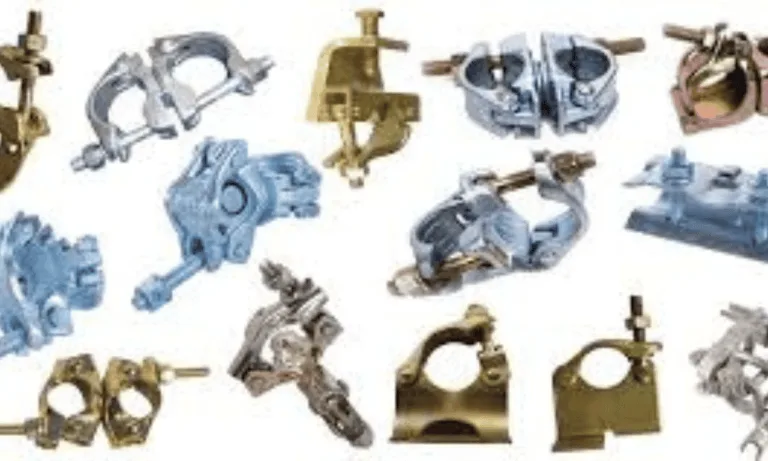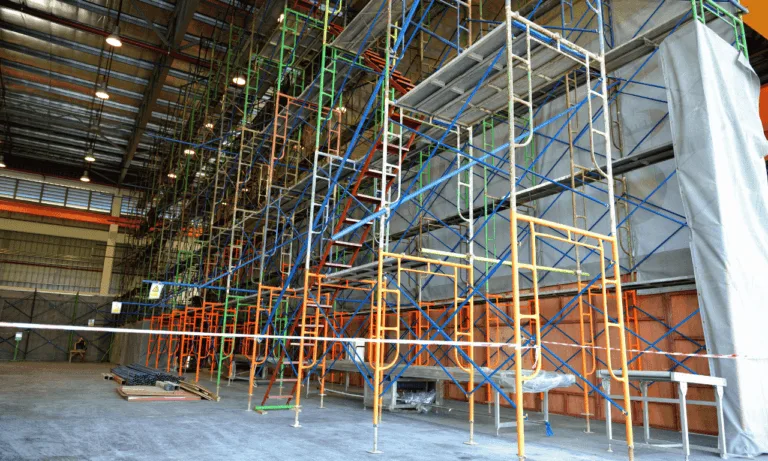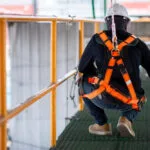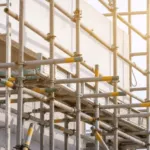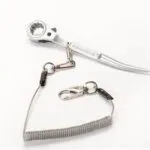Phone:
(+65)8319-0742
Working at height poses significant safety risks, especially when using scaffolding. To ensure a secure and incident-free construction process, it is crucial to prioritize safety measures and adhere to proper usage guidelines. Whether you are a professional contractor or a DIY enthusiast, understanding the safety protocols and best practices related to roofing bracket scaffolding is of utmost importance.
Roofing bracket scaffolding, also known as roof brackets, is a versatile scaffold system designed specifically for construction and maintenance tasks on roofs and elevated structures. This type of scaffolding provides a safe and efficient method for accessing rooftops, allowing workers to perform various tasks such as repairs, installations, and inspections.
Key manufacturers in the industry offer a range of adjustable scaffold brackets and roofing access platforms that are designed to ensure the utmost safety for workers. These scaffold systems are specifically engineered to provide stability, support, and easy maneuverability, making them essential roof safety equipment for professionals in the field.
Key Takeaways
- Roofing bracket scaffolding provides a safe and efficient method for accessing rooftops during construction and maintenance tasks.
- It is crucial to follow safety protocols, load-bearing capacities, and scaffolding regulations to minimize risks and prevent accidents.
- Personal protective equipment, such as hard hats and fall arrest equipment, is essential to protect workers from potential hazards.
- Regular inspections, good housekeeping, and monitoring weather conditions help maintain a hazard-free work environment.
- Working with licensed staff and understanding climbing practices and scaffold tags further enhance safety.
The Importance of Personal Protective Equipment
When working at heights, personal protective equipment (PPE) plays a critical role in ensuring the safety of workers. It encompasses various gear designed to protect individuals from potential hazards in construction and other industries. Employers must prioritize the use of PPE, including hard hats, fall arrest equipment, non-slip footgear, hand-protecting gloves, and tool-tether lanyards, to create a secure working environment.
One essential piece of PPE is the hard hat, which provides protection against injuries caused by falling objects. By wearing a hard hat, workers mitigate the risk of head injuries and potential fatalities at construction sites and other elevated workplaces.
To prevent falls, individuals need to use fall arrest equipment when working on platforms or scaffolding. This equipment includes safety harnesses, lanyards, and anchor points that secure workers in the event of a fall, minimizing the risk of severe injuries or casualties.
Additionally, non-slip footgear is crucial for maintaining stability and traction when working at heights or on elevated surfaces. This type of footwear reduces the likelihood of slips and falls, which can have devastating consequences.
Incorporating hand-protecting gloves into the workplace ensures that workers maintain a secure grip on tools and materials. These gloves not only enhance performance but also reduce the risk of dropping objects from a height, which could pose a danger to workers below.
Lastly, tool-tether lanyards offer a practical solution for preventing accidents caused by dropped tools. These lanyards secure tools to workers, making it less likely for them to fall and cause injuries or damage to property or individuals below.
By utilizing the appropriate PPE, workers can enhance their safety and operational efficiency while working at heights. Employers should provide comprehensive training on the correct usage, maintenance, and inspection of personal protective equipment to ensure workers’ wellbeing. Investing in PPE not only safeguards employees but also protects businesses by reducing the risk of accidents and the associated financial costs.
Personal Protective Equipment for Working at Heights
| PPE | Description |
|---|---|
| Hard Hat | Protects against head injuries from falling objects |
| Fall Arrest Equipment | Includes safety harnesses, lanyards, and anchor points to prevent falls |
| Non-Slip Footgear | Provides stability and traction to reduce the risk of slips and falls |
| Hand-Protecting Gloves | Improves tool grip and reduces the likelihood of dropped objects |
| Tool-Tether Lanyards | Secures tools to workers, preventing accidents caused by dropped objects |
Load-Bearing Capacities and Scaffolding Regulations

When it comes to scaffolding, understanding load-bearing capacities and adhering to scaffolding regulations is crucial for ensuring the safety of workers. Scaffolding equipment is specifically designed with load-bearing capacities in mind, determining the maximum weight it can safely support. Placing excessive loads on scaffolding structures can lead to serious injuries, as scaffold platforms may break, fail, or collapse if overloaded.
Scaffolding components are designed with a safety factor, which provides a capacity safety cushion. This safety factor ensures that the scaffold structure can safely handle loads that are slightly above the specified design capacity, preventing accidents and maximizing safety. Before putting heavy loads on the scaffold decks, it is important to know the specific load capacity of the structure.
To ensure compliance and prevent accidents, it is essential to follow industry-specific regulations, such as industry standards and OSHA regulations. These regulations outline the specific requirements and guidelines for scaffolding construction and usage, including load-bearing capacities and safety factors. Additionally, customer site requirements must also be considered to ensure that scaffolds meet the necessary standards and specifications.
In order to maintain a safe working environment, regular inspections conducted by a Competent Person are crucial. These inspections help identify any potential issues or hazards with the scaffolding, ensuring that it remains structurally sound and safe for use. Worker training is also necessary to minimize risks and ensure that individuals working on or near the scaffolding understand how to safely operate and utilize the equipment.
Summary Table: Load-Bearing Capacities and Scaffolding Regulations
| Key Factors | Description |
|---|---|
| Load-Bearing Capacities | The maximum weight that the scaffolding structure can safely support. |
| Scaffolding Regulations | Industry-specific regulations, such as industry standards and OSHA regulations, that dictate the requirements and guidelines for scaffolding construction and usage. |
| Safety Factor | The capacity safety cushion designed into scaffolding components, ensuring that the structure can safely handle loads slightly above the specified design capacity. |
| Competent Person Inspection | Regular inspections conducted by a trained individual to identify any potential issues or hazards with the scaffolding. |
Ensuring that scaffolding equipment is used within its load-bearing capacities and in compliance with scaffolding regulations is essential for maintaining a safe work environment. By following these guidelines, businesses can prioritize the safety of their workers and minimize the risk of accidents or structural failures.
Materials Inspection and Proper Assembly
Prior to setting up work platforms, it is crucial to conduct a thorough materials inspection to ensure the structural integrity of the scaffolding components. Mismatching components can pose a significant hazard and lead to structural failure, compromising the safety of workers. Therefore, it is important to follow the manufacturer’s instructions during assembly to ensure proper bracing, fastening, and anchor requirements are met.
Creating a safe work area also involves considering the ground surface and power line safety. Ideally, scaffolding should be erected on a level ground surface to provide stability and prevent accidents. However, if the terrain is sloped, it is important to use the right components to safely build the scaffolding. Additionally, strict safety guidelines must be followed when working near power lines to prevent electrocution and other serious accidents.
Another crucial aspect of ensuring safe assembly is the presence of a competent builder person. This highly skilled individual has a deep understanding of scaffolding assembly and dismantle work, ensuring that all procedures are carried out correctly and safely. Their expertise and knowledge are invaluable in maintaining the structural integrity and safety of the scaffolding.
Materials Inspection Checklist:
- Inspect scaffolding components for any signs of damage, wear, or defects
- Check for any mismatching components that could compromise the stability of the scaffolding
- Refer to the manufacturer’s instructions for proper assembly techniques and guidelines
- Ensure that all bracing is secure and properly installed
- Use appropriate fasteners according to the manufacturer’s recommendations
- Follow anchor requirements to ensure stability and prevent tipping
- Consider the work area safety, including the level ground surface and power line proximity
By conducting a thorough materials inspection and adhering to proper assembly practices, you can ensure the structural integrity and safety of the scaffolding. Following the manufacturer’s instructions, considering the ground surface, and working under the guidance of a competent builder person are essential steps in creating a secure work environment.
Regular Inspections and Good Housekeeping

Regular inspections and good housekeeping are essential practices to maintain a safe working environment when using scaffolding. By conducting thorough inspections and ensuring proper housekeeping, potential hazards can be identified and addressed promptly, minimizing the risk of accidents and injuries.
Inspections
Regular inspections should be conducted to identify any hazards, defects, or debris that could pose risks to workers’ safety. Competent User Person inspections at the beginning of each workday are crucial to ensure a hazard-free area for that shift. These inspections should include a thorough examination of the scaffolding structure, checking for any signs of damage or weakness.
Additionally, scaffolding safety check-lists can provide a useful tool to ensure all necessary safety elements are confirmed daily. These check-lists should cover important aspects such as the stability of the scaffold, proper installation of guardrails, and the condition of access points.
Good Housekeeping
Maintaining cleanliness and order on scaffolds is crucial for safety. Tools, debris, excess planks, or trash left on scaffolding can create tripping hazards and add unnecessary stress to the scaffold structure. Therefore, it is vital to keep the work area clean by removing any unnecessary items and properly storing tools and equipment.
Furthermore, keeping vehicles and heavy equipment clear of the scaffold base is important to prevent accidental collisions or damage to the structure. Setting up barriers around the scaffold can further enhance safety by preventing toppling accidents and unauthorized access.
Weather Conditions
When working with scaffolding, it is important to consider the impact of weather conditions on safety. Harsh weather conditions such as high winds, heavy rain, lightning, snow, or ice can increase the risks associated with scaffolding. Therefore, it is advised to avoid working in such conditions to prevent scaffolding hazards.
| Hazards | Safety Measures |
|---|---|
| Tripping hazards | Keep the work area clean and organized. |
| Scaffold structure stress | Regular inspections and repairs of scaffold components. |
| Weather conditions | Avoid working in harsh weather conditions. |
Licensed Staff and Climbing Practices

When it comes to working with roofing bracket scaffolding, it is essential to have licensed staff and contractors on board. Their expertise ensures adherence to proper scaffolding practices and reduces the risk of injuries.
Climbing practices play a vital role in maintaining a safe working environment. It is crucial to practice the three-point contact rule while climbing the scaffold. This means that at all times, you should have three points of contact with the scaffold, such as two hands and one foot or two feet and one hand.
Roofing professionals, who are securely tied off, can climb both vertical and horizontal bars during the assembly or disassembly process. For others, using ladders, ramps, or stair towers is recommended for climbing purposes.
Another important aspect of scaffolding safety is the use of scaffolding tags. These tags help identify the safety status of the scaffold. Green tags indicate safe use, yellow tags indicate modifications with special precautions, and red tags indicate danger and unsafe scaffolds. Being aware of these tags helps ensure that you are working on a safe and secure scaffold.
Key Takeaways:
- Working with licensed staff and contractors is crucial for safe scaffolding practices.
- Maintain three points of contact with the scaffold at all times while climbing.
- Roofing professionals can climb securely tied off, while others should use ladders, ramps, or stair towers.
- Scaffolding tags indicate the safety status of the scaffold: green for safe use, yellow for modifications, and red for danger.
Understanding Roof Brackets and Installation Guidelines
Roof brackets, also known as roof jacks, play a critical role in ensuring the safety and stability of wooden planks on the roof. While they are not certified by ANSI or the CSA Group, they are widely used in the industry and should be installed in accordance with the manufacturer’s guidelines. Understanding the proper roof pitch, plank width, and maximum weight for each type of bracket is essential for a secure and reliable installation.
Roof brackets come in adjustable and fixed types, each offering unique features and applications. Adjustable roof brackets are versatile and can accommodate various roof pitches, making them suitable for different roofing projects. Fixed roof brackets, on the other hand, provide a stable platform for specific roof pitches.
To ensure proper installation, it is crucial to follow the manufacturer’s installation guidelines carefully. These guidelines provide step-by-step instructions on how to securely attach the roof brackets to the roof structure. It is also important to use the recommended fasteners to ensure a reliable and long-lasting installation.
Roof Brackets Installation Guidelines:
- Inspect the roof structure and identify suitable locations for the roof brackets.
- Ensure the roof brackets are securely mounted using appropriate fasteners, such as nails or bolts.
- Follow the manufacturer’s instructions on spacing between roof brackets to maintain a stable and level work platform.
- Consider the roof pitch when selecting the appropriate roof brackets for your project.
- Verify the plank width recommended by the manufacturer to ensure a secure fit on the roof brackets.
- Take into account the maximum weight capacity of the roof brackets to avoid overloading and potential accidents.
- Regularly inspect the roof brackets for any signs of wear, damage, or corrosion. Replace any compromised brackets immediately.
Proper installation and secure attachment of roof brackets are crucial for ensuring a safe and stable work environment when working at height. By following the manufacturer’s guidelines and using the recommended fasteners, you can trust that your roof brackets will provide the necessary support and protection during your roofing projects.
Mounting and Setting up Roof Brackets
When it comes to mounting roof brackets, proper installation is key to ensuring safety and stability. Here are the important steps to follow:
- Choose the right location: Determine the optimal placement for the roof brackets and identify the roof joists beneath the outer roof surface.
- Secure with appropriate nails: Use nails that penetrate the outer roof surface and reach a roof joist for proper support. This ensures that the brackets are securely attached to the roof structure.
- Maintain the correct spacing: The spacing between roof brackets should not exceed four feet. This ensures even weight distribution and enhances the stability of the work platform.
- Select the appropriate bracket type: Depending on your specific requirements, choose between fixed pitch roofing brackets or adjustable style roof brackets. Fixed pitch brackets are suitable for level roofs, while adjustable brackets can accommodate different roof angles.
- Create a level work platform: It’s crucial to ensure that the work platform is level to prevent any slips or accidents. Use a level to verify the proper alignment and adjust the brackets accordingly.
- Use suitable wood platforms: The wood platforms should be of sufficient thickness to support the intended load. They should extend beyond the roof brackets by at least 6 inches but no more than 12 inches to provide stability and a secure working surface.
- Choose construction-grade lumber: Opt for construction grade lumber when constructing the platforms. This type of lumber is designed to withstand the rigors of construction work and provides the necessary strength and durability.
- Consider extended length platforms: If you require a longer work platform, additional roof brackets should be used to support the extended length. This ensures that the platform remains stable and secure.
By following these guidelines and taking the necessary precautions, you can mount and set up roof brackets effectively, providing a safe and reliable work platform for your roofing projects.
Capacity, Usage, and Care of Roof Brackets
When using roof brackets, it is crucial to understand their capacity and proper usage to ensure safety at all times. Roof brackets have a capacity of one person per every four feet of scaffold, allowing for efficient and secure work on elevated surfaces. However, it is important to note that roof brackets should never be used as a sole fall protection system. Instead, they should be used in conjunction with a reliable fall arrest system to provide comprehensive safety.
In addition to capacity and usage, proper care and maintenance of roof brackets are essential for their longevity and effectiveness. Regular equipment inspections should be conducted to check for any signs of damage, deformation, or deterioration. This includes examining the brackets for any visible wear and tear, ensuring that they are still capable of providing the necessary support and stability.
Roof brackets should also be handled with care to prevent any unnecessary damage. They should never be thrown or dropped from height, as this can compromise their structural integrity and render them unsafe to use. Furthermore, roof brackets should not be used in extreme temperatures or wet/frozen conditions, as these environmental factors can affect their performance and stability. It is vital to discard any damaged or compromised brackets to ensure the continued safety of workers.
Using the Walking Surface and Ensuring Worker Safety
One of the key advantages of roof brackets is their walking surface, which can be utilized to stage materials and ease work on steep slope roofs. This provides a stable platform for workers to perform their tasks more efficiently and securely. By utilizing the scaffold’s walking surface, workers can maintain their balance and have a designated area for organizing tools and equipment.
However, it is important to note that walking surfaces should not be cluttered or obstructed to ensure worker safety. Good housekeeping practices should be implemented to keep the area clear of any tripping hazards, debris, or excess materials. This includes regular clean-up sessions to remove any objects that may impede movement or compromise the stability of the scaffold.
Furthermore, it is important to monitor weather conditions to ensure safe working conditions. Extreme temperatures, such as excessive heat or freezing temperatures, can affect the performance of roof brackets and compromise worker safety. Wet or frozen conditions can create slippery surfaces, making it hazardous to work on elevated platforms. It is crucial to exercise caution and prioritize worker safety by avoiding work during these unfavorable weather conditions.
Conclusion
Safety is of paramount importance when using roofing bracket scaffolding. Following proper safety practices, using personal protective equipment, adhering to load-bearing capacities and scaffolding regulations, inspecting materials, and following manufacturer’s instructions are crucial for safe construction and operation. Regular inspections, good housekeeping, and monitoring weather conditions are essential to maintain a hazard-free work environment.
Working with licensed staff, observing climbing practices, and understanding scaffold tags further enhance safety. Proper installation of roof brackets, following manufacturer’s guidelines, and setting up the work platform correctly are important for stability. Care and maintenance of roof brackets, along with using appropriate safety equipment and conducting equipment inspections, ensure long-term safety.
FAQ
What is the importance of personal protective equipment when working at heights?
Personal protective equipment, such as hard hats, fall arrest equipment, non-slip footgear, hand-protecting gloves, and tool tethering lanyards, is necessary to protect workers from injuries and falls while working on rooftops and scaffolding.
What are the load-bearing capacities and regulations for scaffolding?
Scaffolding components have specific load-bearing capacities and should not be overloaded. It is important to follow industry-specific regulations, OSHA regulations, and customer site requirements to ensure compliance and prevent accidents. Regular inspections by a Competent Person and worker training help minimize risks.
Why is material inspection and proper assembly important for scaffolding safety?
Inspecting all materials before assembly ensures structural integrity and prevents hazards. Mismatched components can lead to structural failure. Following the manufacturer’s instructions during assembly ensures proper bracing, fastening, and anchor requirements. A safe work area involves considering the ground surface and power line safety.
How often should scaffolding be inspected, and why is good housekeeping essential?
Scaffolding should be regularly inspected to identify hazards, defects, and debris that could cause problems. Competent User Person’s inspections at the start of each workday ensure a hazard-free area for that shift. Good housekeeping, such as cleaning and organizing the scaffold, is crucial for safety as tools, debris, and excess planks can create tripping hazards and stress the scaffold structure.
What are the guidelines for using licensed staff and climbing practices on scaffolding?
Working with fully licensed staff and contractors helps prevent injuries and ensure proper scaffolding practices. Climbing practices require maintaining three points of contact with the scaffold at all times. Roofing professionals can climb vertical and horizontal bars during assembly or disassembly if securely tied off. Others should use ladders, ramps, or stair towers for climbing. Scaffolding tags help identify the safety status of scaffolds.
What are roof brackets, and what are the guidelines for their installation?
Roof brackets, also known as roof jacks, are tools for securing wooden planks to the roof for safety and stability. Roof brackets should be installed according to the manufacturer’s guidelines, considering roof pitch, plank width, and maximum weight. Proper installation and secure attachment are essential.
How should roof brackets be mounted, and what are the proper setup requirements?
Roof brackets should be mounted on the roof using appropriate nails that penetrate the outer roof surface and reach a roof joist for proper support. The spacing between roof brackets should not exceed four feet. Fixed pitch roofing brackets and adjustable style roof brackets should be installed to ensure a level work platform. Wood platforms should be of sufficient thickness and extend beyond the roof brackets by at least 6 inches but no more than 12 inches.
What is the capacity, usage, and care of roof brackets?
Roof brackets have a capacity of one person per every four feet of scaffold. They should never be used as a sole fall protection system but in conjunction with appropriate safety equipment. Using the walking surface of the scaffold to stage materials and ease work on steep slope roofs is recommended. Regular equipment inspections should be conducted to check for damage, deformation, and deterioration. Roof brackets should be handled with care and not used in extreme temperatures or wet/frozen conditions.
What is the conclusion regarding roofing bracket scaffolding safety and usage?
Safety is of paramount importance when using roofing bracket scaffolding. Following proper safety practices, using personal protective equipment, adhering to load-bearing capacities and scaffolding regulations, inspecting materials, and following manufacturer’s instructions are crucial for safe construction and operation. Regular inspections, good housekeeping, and monitoring weather conditions are essential to maintain a hazard-free work environment. Working with licensed staff, observing climbing practices, and understanding scaffold tags further enhance safety. Proper installation of roof brackets, following manufacturer’s guidelines, and setting up the work platform correctly are important for stability. Care and maintenance of roof brackets, along with using appropriate safety equipment and conducting equipment inspections, ensure long-term safety.

